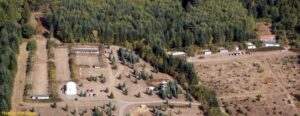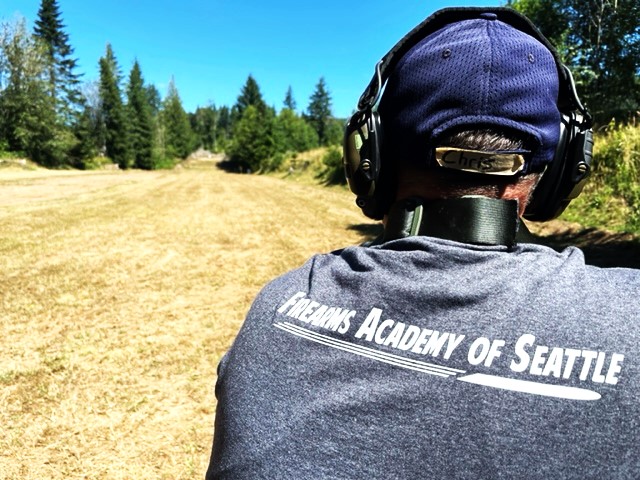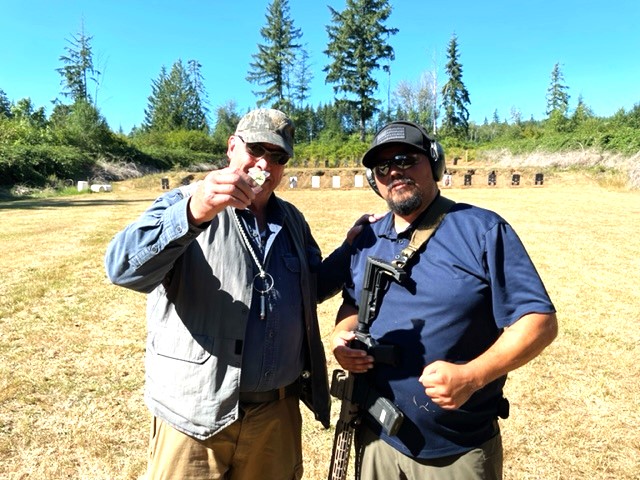Defensive Shotgun: Firearms Academy of Seattle Gives You the Skills
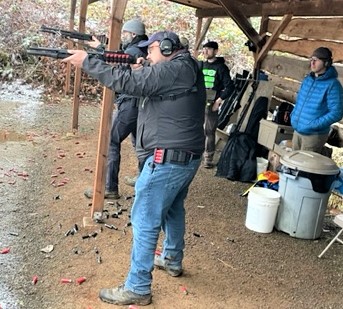
The Firearms Academy of Seattle (FAS) takes the shotgun seriously. Their eight hour Defensive Shotgun course dispels the myths and provides the correct knowledge and skills necessary to use the shotgun for self-defense or law enforcement duty. It is a bargain and people come from all across the country for these classes.
Many shooters spend thousands of dollars on guns and equipment but fail to attain the skills to get the benefits of their investment. FAS provides a venue for shooters to learn the skills and practice essential survival tasks in realistic conditions. FAS instructors keep things safe while pushing student skills to higher levels.
Shotguns are flexible, affordable and reliable. Ammunition is widely available in a wide array of capabilities. Shotguns are non-threatening politically with devastating terminal ballistics. In a situation where you need a gun for hunting large or small game and protecting your family, there is just nothing better than a shotgun. Legal in all 50 states and commonly praised by anti-gunners as a logical alternative to “assault rifles,” shotguns are among the most powerful weapons allowed by law.
The Defensive Shotgun starts in the classroom. My class had seven students, all civilians with a variety of experience, looking to improve their shotgun skills. FAS has a number of loyal repeat training customers and most of the class had trained at FAS before. There were six pump shotguns (Remington 870’s and Mossberg 590’s) with one semi-auto (Beretta 1301). The primary instructor, Erik Knise was assisted by Dan and Anthony for a great student instructor ratio.
Erik used PowerPoint and video to get everyone up to speed on the capabilities and limitations of the shotgun by explaining shotgun ammunition performance. One of the reasons shotgun seem mysterious is the arcane method used to describe their bore size, gauge. A shotgun’s gauge is determined by the number of lead balls of a given diameter required to make one pound of that size ball. Thus 12 balls of 12 gauge diameter are required to make one pound of such balls. The actual (nominal) bore diameter of the 12 gauge is .729 caliber or 18mm.
In this introduction, the types of shotguns are covered and a explanation of function and loading for pump and semi-automatic shotguns is given. The size of the ammunition makes it powerful, but it reduces the number of rounds you can carry. Erik explained various ways to carry ammunition and how to load.
On the range, things got started with stance and grip. Erik demonstrated the push/pull technique of recoil management. The shooter pulls forward on the foregrip while pulling back on the stock with the firing hand. This “stretching” the gun takes up much of the recoil impulse allowing faster follow up shots.
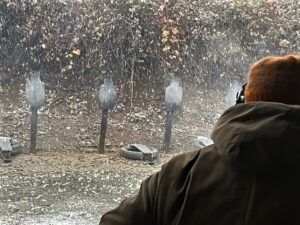
Next came dry fire loading drills. Once everybody displayed proficiency with ejection port loading and magazine top off, we moved on to shooting drills emphasizing keeping the gun loaded. “Shoot one, load one” keeps the gun working. At every opportunity we were encouraged to top off the tubular magazine. We worked with steel targets which provided great feedback while eliminating time consuming target replacement. Shotguns destroy targets, backers and even target stands.
The day was cold with light snow flurries but the covered range and active nature of the training kept everyone warm.
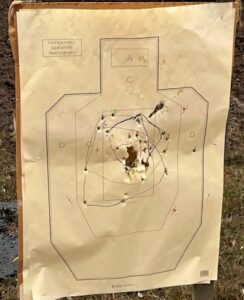
Next up was the vital skill of patterning. Shooters fired 5 rounds of buckshot at ranges from 3 yards to 25 yards marking hits at each distance. The result was determining the effective range of your shotgun/ammunition combination where you can keep all of the pellets on target.
Students see the accuracy potential of the shotgun, along with understanding how shot patterning effects the tactical use of the shotgun in self defense and hostage situations. You are responsible for each pellet. Knowing the limitations of your ammunition dictates when you need to switch to slug.
Slugs were shot at 50 yards and students were given the opportunity to zero with instructor assistance. After three groups the whole class was on target.
Now it was lunch time and the class headed back for a welcome break to warm up and re-charge. While we ate, Erik talked about the legalities of self defense. Defensive Shotgun is an entry level class at FAS. They take the legal preparation of the shooter just as seriously as the kinetics. A very through explanation of the legalities of self defense and the shooters legal and moral responsibilities followed.
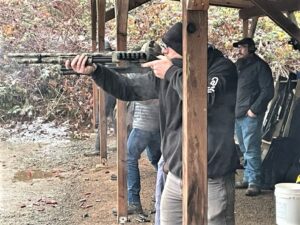
After lunch, we went back to the steel range and conducted drills combining various skills: reloading, multiple targets, multiple hits, use of cover both strong side and weak side. The last drill was a team reloading drill called “Rolling Thunder” combining speed shooting with fluid reloading. This gave each shooter the opportunity to see how they stacked up against the rest of the class.
Before you take Defensive Shotgun, a little preparation is in order. Make sure you shoot your gun and know how it works. If you bring a semi-auto shotgun to class, make sure your ammo will cycle your gun.
We had several people in class realize that some of their attachments (lights, side saddles etc) were positioned where the interfered with shooting grip and had to be moved to prevent injuries as they poked the shooter on each shot.
Make sure you have all necessary gear and ammunition. There where several opportunities for shooters to shoot more ammunition if they wanted. Minimum numbers are good and ammo is expensive, but when range time is at a premium, the opportunity to get extra training should be considered.
Defensive Shotgun Equipment List
- 12 gauge or 20 gauge shotgun with full length or adjustable stock. No pistol grip only stocks.
- 100 rounds lead bird shot.
- 5 rounds of defensive buckshot for patterning
- 20 rounds non-magnum buckshot (not required, but recommended. Birdshot can be used)
- 10 rounds (15 recommended) rounds of slugs
- Ear protection, wrap-around safety glasses (eye protection) and a brimmed ball cap.
- Notebook and pen
- Sack lunch and beverages–Lunch is eaten during classroom lecture.
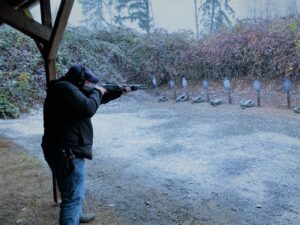
I highly recommend training at FAS. The shotgun class covered the basics and provided awesome range time at a professional facility with quality instructors.
There is no substitute for professional instruction. With the knowledge gained in this class, a new shooter can be confident that they understand the legalities of self defense and the basic shotgun skills needed to use force if necessary.
They next step? Practice what you know and seek more training. The combat shotgun is simple to learn to shoot, but one of the hardest to truly master. After Defensive Shotgun, FAS offers a two day Advanced Defensive Shotgun class.
The advanced class teaches long range shotgunning, moving targets, multiple targets, multiple hits, low light, use of horizontal and vertical cover both strong side and weak side, moving and shooting and man-on-man competitions and the opportunity to challenge your skills against the FAS Shotgun Master Test. I hope to be in the next advanced class and write about the experience.
About Firearms Academy of Seattle:
In 1994 FAS purchased land located 1 1/2 hours north of Portland, OR 2 hours south of Seattle, WA. establishing the FAS Tactical Training Range, which expanded the variety of 360-degree training environments to maximize the students learning experience, including a dark-house for low light training during daylight hours, building mock-ups, moving targets and more. All of our classes listed on this website are taught at this location.
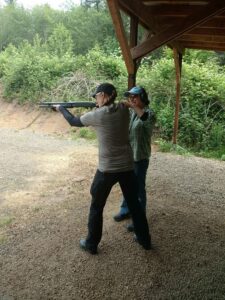 Founded in 1987 by former law enforcement officer Marty Hayes, and purchased by Belle McCormack in 2022. FAS prides itself on its reputation of being the longest-established professional firearms training facility in the Pacific Northwest. They provide high-quality instruction on firearms safety, competency, survival, and self-defense skills to thousands of students. All of their instructors are graduates of Massad Ayoob’s classes and most are cross-certified to teach in various disciplines. In addition to FAS classes, FAS hosts guest instructors who are among the top instructors in the world, in order to expand your training opportunities.
Founded in 1987 by former law enforcement officer Marty Hayes, and purchased by Belle McCormack in 2022. FAS prides itself on its reputation of being the longest-established professional firearms training facility in the Pacific Northwest. They provide high-quality instruction on firearms safety, competency, survival, and self-defense skills to thousands of students. All of their instructors are graduates of Massad Ayoob’s classes and most are cross-certified to teach in various disciplines. In addition to FAS classes, FAS hosts guest instructors who are among the top instructors in the world, in order to expand your training opportunities.
We offer live-fire classes year-round to civilians, military, and law enforcement. They have an extensive course list for pistol, rifle, and shotgun with beginner and intermediate starting points.
If you are interested in firearms training but are not sure which class is appropriate for your skill level, please consider the information on our page entitled “Where to Start.”
